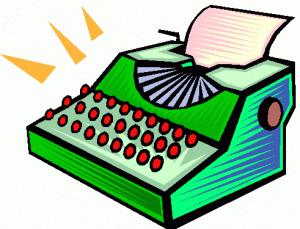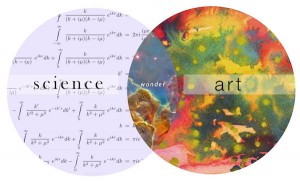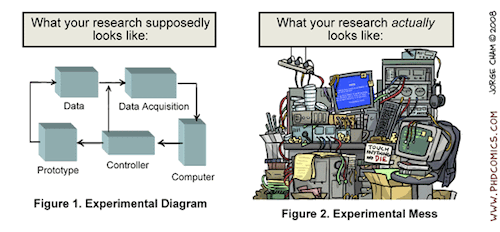by Naomi L. | September 4, 2015 | J.C. Wolfe's Writing, Poetry |
Beautiful Earth full of life,
I love to study your ecosystems, from your
Oceans teeming with fascinating creatures to your
Landscapes rich with lush vegetation.
Only your beautiful nature, rich with
Greens and blues, can pique such curiosity in me.
Your living world is my science, my knowledge, my life!
by Naomi L. | August 14, 2015 | J.C. Wolfe's Writing, Poetry |
Study books and papers every day.
Constantly seek original ideas and approaches.
Innovate your methods in practice and
Experiment until you get results.
New theories are always emerging, so
Contribute all you can to the knowledge of humanity.
Endless discoveries are waiting to made!
by Naomi L. | June 10, 2015 | Blog, Creative Writing |
Yes, I know it’s been a while since I’ve posted one of these, but I haven’t forgotten about this series! On the topic of art and science, so far I’ve discussed their similarities and differences in reading, writing, and research. Now it’s time to discuss another important part of any type of writing: editing. How do art and science compare when it comes to proofreading your work?
How the Art is like the Science
Editing is an essential part of writing, no less important than the creative part. It’s a practice that every writer must undertake at least at the most basic level. Even if you hand your work off to someone else for proofreading, you still need to be confident in the quality of whatever you’re passing on, and the only one who can make that call is you. Whether you write artistically or scientifically, rewriting is writing, and you can’t expect that writing to go very far unless you give it the care and attention it deserves.
Artists and scientists alike are expected to master the technique of editing. We have to know how to take a step back and review everything we’ve written with a fresh perspective. We must be able to channel our inner writer and our inner critic and learn when to listen to which voice. We have to be able to catch mistakes in a second, third, fourth reading. We need to be able to identify weak points and figure out how to connect all our ideas into one coherent picture. Regardless of our form, style, or content, the ability to edit our own work is indispensable if we wish to be taken seriously in this ever-expanding world of the written word.
At its core, editing is crucial to all forms of writing. The process of editing, however, differs between artistic and scientific writing.
How the Art is unlike the Science
Editing artistic writing is something of a linear process. First, it’s up to the writer to look over their work and make as many changes as they deem appropriate. As the best of us know, this part alone can take weeks, if not months or even years. Once the author is satisfied with their draft, the baton is often passed to an editor, ideally a professional, who provides fresh opinions on how to improve the piece. A back-and-forth between the writer and the editor is encouraged at this stage for the benefit of the work being revised, and some writers choose to include a beta reader or two for additional insight. Novelists who opt for the traditional route also need to wait for their manuscript to be approved by a publishing house, yet another stop on the road to publication. Only when a written work has passed all the checkpoints can it finally reach the public, and while there may be some overlapping along the way, the process as a whole is basically one continuous track.
 Scientific writing, on the other hand, is revised through a sort of “simultaneous editing”. For example, my first experience writing a research paper involved a collaborative effort among me, my professor, and two other authors. One researcher was responsible for most of the writing, then we each had to review the first draft on our own time and send each other our notes so the lead author could incorporate them all into one updated draft for a second round of reviews. This process was repeated several times until we were all satisfied enough with the final draft to submit it for peer review, at which point it was up to another group of researchers to simultaneously read it over and contribute their opinions. Since an academic paper usually takes more than one writer to put together, it’s much more time efficient to have multiple editors review it at the same time throughout the stages from writing to publication, especially in an age when information is emerging faster than we can keep up with it. In short, multiple reviewers plus simultaneous editing equals faster science.
Scientific writing, on the other hand, is revised through a sort of “simultaneous editing”. For example, my first experience writing a research paper involved a collaborative effort among me, my professor, and two other authors. One researcher was responsible for most of the writing, then we each had to review the first draft on our own time and send each other our notes so the lead author could incorporate them all into one updated draft for a second round of reviews. This process was repeated several times until we were all satisfied enough with the final draft to submit it for peer review, at which point it was up to another group of researchers to simultaneously read it over and contribute their opinions. Since an academic paper usually takes more than one writer to put together, it’s much more time efficient to have multiple editors review it at the same time throughout the stages from writing to publication, especially in an age when information is emerging faster than we can keep up with it. In short, multiple reviewers plus simultaneous editing equals faster science.
The art of editing is learning how to balance the inner writer and the inner critic, while the science of editing is refining your work into a piece worthy of public attention. How to go about it may depend on what exactly you write, but if you can master the technique, you can be sure it’ll bring you one step closer to being on the outside what you already are at heart: a full-fledged writer.
by Naomi L. | April 15, 2015 | Blog, Creative Writing |
Back to the subject of art and science! Since starting a discussion on this topic last month, I’ve already talked about the reading and writing aspects of the comparison between art and science. Now I’m inspired to get into another topic that has held my interest for as long as I can remember: research. How do these two sides compare when it comes to looking things up?
How the Art is like the Science
Research is a technique that every serious writer must master, regardless of medium. Scientists need to acquire purely factual information to form a solid foundation of credibility for their studies and continuously guide their work toward new discoveries. Journalists have to be aware of all the facts of a story in order to accurately convey the news to their readers/viewers. Even fiction writers and poets draw ideas from real life to paint a vivid image with the details in their stories and poetry. No matter what we choose to write, we should always do at least a little research to make our work believable, and that’s why the best writers do well to keep reference books, articles, and search engines handy at all times.
What makes most literature relatable is that no matter how fantastic the details may be, there’s always some base of truth with which the reader can connect, whether it’s the spectrum of emotions shown by fictional characters or world news that directly or indirectly affects us. As writers, it’s up to us to curate the ideas we want to share with our audience and present them in a way that makes our writing fresh and interesting, for fiction and non-fiction alike.
Research is a universal term for looking up information that we can put to good use. The differences, however, lie in the purposes of this practice…
How the Art is unlike the Science
Artistic writing is widely popular as an escape from reality for the fascinating stories one can only find in fiction. That being said, a writer can’t expect for more than a handful of readers to enjoy their work unless they can somehow bridge the gap between the fictional world of their stories and the real world of their audience. This is where research plays a key role. Writers of historical fiction have to know as many specific details as possible of the past events around which they construct their tales. Science fiction writers should have at least a basic understanding of real scientific principles before attempting to pass their stories off as even remotely plausible. Murder mysteries and thrillers rely on plots that could happen in real life in order to achieve their full effect, and romance novelists need to understand human nature and relationships if they want to make their characters relatable. Research is important for all forms of artistic writing, and fiction writers who master it will find their craft all the more enriching for it.
Scientific writing, on the other hand, thrives on research taken to a whole other level. While research for writing may be optional for many artists, it is unequivocally mandatory for scientists. Not only are we expected to read everything related to our field of interest, but we have to do so before we even think about writing our own work! If I learned anything from my first years as a Biology student, it’s that you can’t expect to make it in the scientific community unless you’re constantly reading. Academic papers, books, news articles, any source of information relevant to your studies can and should be perused. Science is all about the progression of knowledge, and in the modern age of the Internet, new information is emerging faster than ever: every week, in fact, if not every single day. In short, research is an enhancement that artists choose to pursue, but lack of research is a hindrance that scientists cannot afford.
Like many aspects of writing, research is something of an art and a science itself. It may not be easy for every writer to acquire the habit, but once you get the hang of it, you’ll find that research is an invaluable practice that will help you connect with your readers and elevate your writing to wonderful new heights. Best of luck! Thanks for reading!
by Naomi L. | March 25, 2015 | Blog, Creative Writing |
Last week, I started a new series of posts on the overlap of my two favorite topics: art and science. After discussing the similarities and differences between artistic and scientific reading, today I’d like to talk about the next major aspect of this creative intersection: writing. How do art and science compare when it comes to composition? Let’s explore!
How the Art is like the Science
When thinking about what art and science have in common, one of the first similarities to come to mind is the written word. Ideas of any kind are often best communicated through writing, so it’s important to know how to convey one’s thoughts as eloquently as possible. As I previously mentioned about reading, our minds have learned to make sense of prose through a set order, and writers of fiction and non-fiction alike must respect that order if their work is to be understood.
Whether we write artistically or scientifically, we have to know how to grab our readers and hold their interest throughout a given work. A good title will attract an audience that shares our interests. The introductory portion establishes our style and the main idea of the whole piece. We must include a clear objective and the promise of action by the middle of the work, and that action must lead to a resolution of conflict by its conclusion. In art and science alike, everything we write must somehow tie together in the end.
Much like reading, writing is fundamentally the same whether it’s done artistically or scientifically. Yet art and science also differ greatly, and in my opinion, nowhere do these disparities shine brighter than in their composition.
How the Art is unlike the Science
When we write artistically, we have all the freedom in the world to experiment with words and ideas to turn out an interesting piece. We can write about anything from magic and myth to true events in history. We can start in the middle and halfway through jump back to the beginning. We can elaborate on the tiniest details or leave everything but plot up to the reader’s imagination. We can write themes and endings that are either thoroughly conclusive or open to interpretation. The possibilities are endless.
 The same freedoms generally don’t apply to science, however. Because academic papers all have to be comprehensible in the same manner, they come with strict rules and guidelines for how to write them. That isn’t to say that we can’t be creative at all, of course; just that there are far more restrictions to work with than in artistic writing. We’re more than welcome – even encouraged – to demonstrate creative thinking, as long as it’s presented with a title, an abstract, an introduction, materials and methods, results, a discussion, and a conclusion. When the point is to convey our ideas as clearly as possible, organization is key.
The same freedoms generally don’t apply to science, however. Because academic papers all have to be comprehensible in the same manner, they come with strict rules and guidelines for how to write them. That isn’t to say that we can’t be creative at all, of course; just that there are far more restrictions to work with than in artistic writing. We’re more than welcome – even encouraged – to demonstrate creative thinking, as long as it’s presented with a title, an abstract, an introduction, materials and methods, results, a discussion, and a conclusion. When the point is to convey our ideas as clearly as possible, organization is key.
Writing prose is both an art and a science at its core, so it’s up to the writer to master the balance between these approaches and know how to make the most of their individual strengths to turn out truly creative works. And that is exactly what I love about creative writing: it appeals to both the artist and the scientist in me! I sincerely hope you can appreciate this beautiful intersection of art and science as much as I do! Thanks for reading!


 Scientific writing, on the other hand, is revised through a sort of “simultaneous editing”. For example, my first experience writing a research paper involved a collaborative effort among me, my professor, and two other authors. One researcher was responsible for most of the writing, then we each had to review the first draft on our own time and send each other our notes so the lead author could incorporate them all into one updated draft for a second round of reviews. This process was repeated several times until we were all satisfied enough with the final draft to submit it for peer review, at which point it was up to another group of researchers to simultaneously read it over and contribute their opinions. Since an academic paper usually takes more than one writer to put together, it’s much more time efficient to have multiple editors review it at the same time throughout the stages from writing to publication, especially in an age when information is emerging faster than we can keep up with it. In short, multiple reviewers plus simultaneous editing equals faster science.
Scientific writing, on the other hand, is revised through a sort of “simultaneous editing”. For example, my first experience writing a research paper involved a collaborative effort among me, my professor, and two other authors. One researcher was responsible for most of the writing, then we each had to review the first draft on our own time and send each other our notes so the lead author could incorporate them all into one updated draft for a second round of reviews. This process was repeated several times until we were all satisfied enough with the final draft to submit it for peer review, at which point it was up to another group of researchers to simultaneously read it over and contribute their opinions. Since an academic paper usually takes more than one writer to put together, it’s much more time efficient to have multiple editors review it at the same time throughout the stages from writing to publication, especially in an age when information is emerging faster than we can keep up with it. In short, multiple reviewers plus simultaneous editing equals faster science.
 The same freedoms generally don’t apply to science, however. Because academic papers all have to be comprehensible in the same manner, they come with strict rules and guidelines for how to write them. That isn’t to say that we can’t be creative at all, of course; just that there are far more restrictions to work with than in artistic writing. We’re more than welcome – even encouraged – to demonstrate creative thinking, as long as it’s presented with a title, an abstract, an introduction, materials and methods, results, a discussion, and a conclusion. When the point is to convey our ideas as clearly as possible, organization is key.
The same freedoms generally don’t apply to science, however. Because academic papers all have to be comprehensible in the same manner, they come with strict rules and guidelines for how to write them. That isn’t to say that we can’t be creative at all, of course; just that there are far more restrictions to work with than in artistic writing. We’re more than welcome – even encouraged – to demonstrate creative thinking, as long as it’s presented with a title, an abstract, an introduction, materials and methods, results, a discussion, and a conclusion. When the point is to convey our ideas as clearly as possible, organization is key.
Recent Comments